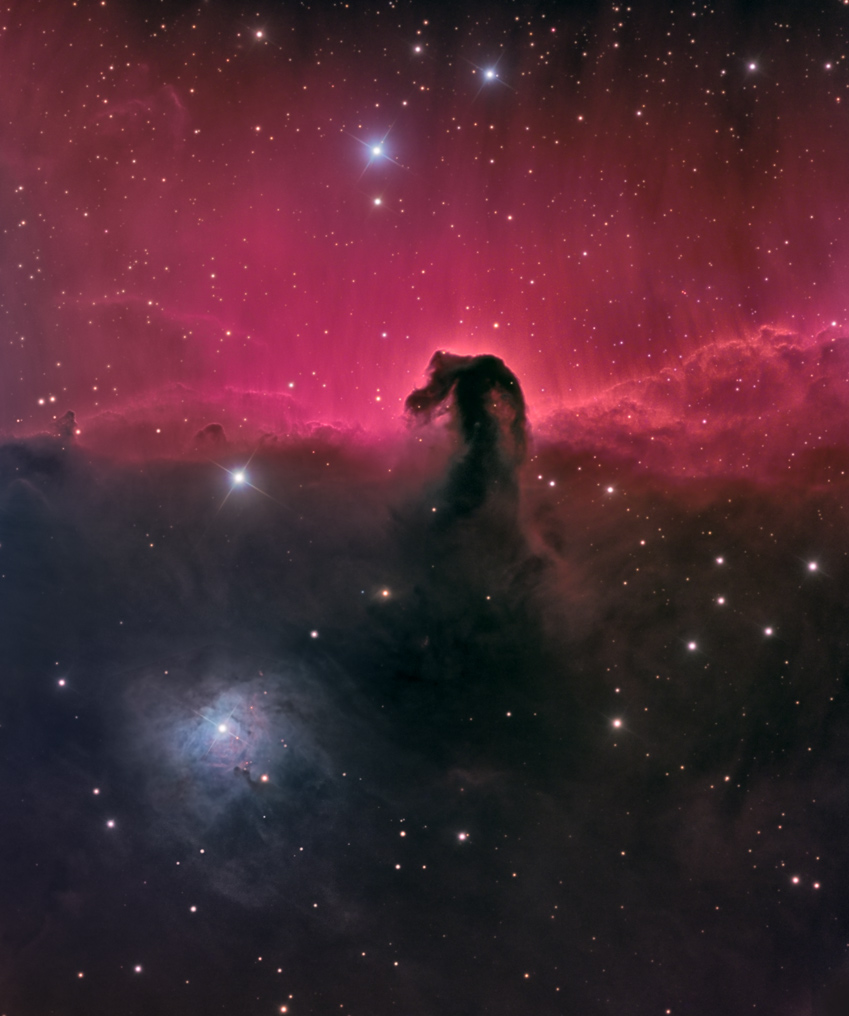
Barnard 33 and IC434: This is part of the Orion molecular cloud complex. The centerpiece of
this image is the iconic Horsehead Nebula, catalogued as Barnard 33 (or B33). The red background is an emission nebula, catalogued as IC434; the Horsehead Nebula is a
dark nebula between us and the emission nebula, so we see it in silhouette against the light background. The blueish area below and to
the left of the horse head is NGC2023, a nearby emission (pink stuff) and reflection (blue stuff) nebula.
This area is about 1500 light years from us; the horse head is about 3.5 light years high.
I last imaged this iconic part of the sky at high resolution 19 years earlier. To see what a combination of better equipment, better skies, and better skills does, click
here.
Also, to see this area in the context of a much larger portion of the Orion Molecular Cloud, click here;
this is an image that I created from data I gathered over four of the five winters, 2012-2016.
Copyright 2022 Mark de Regt